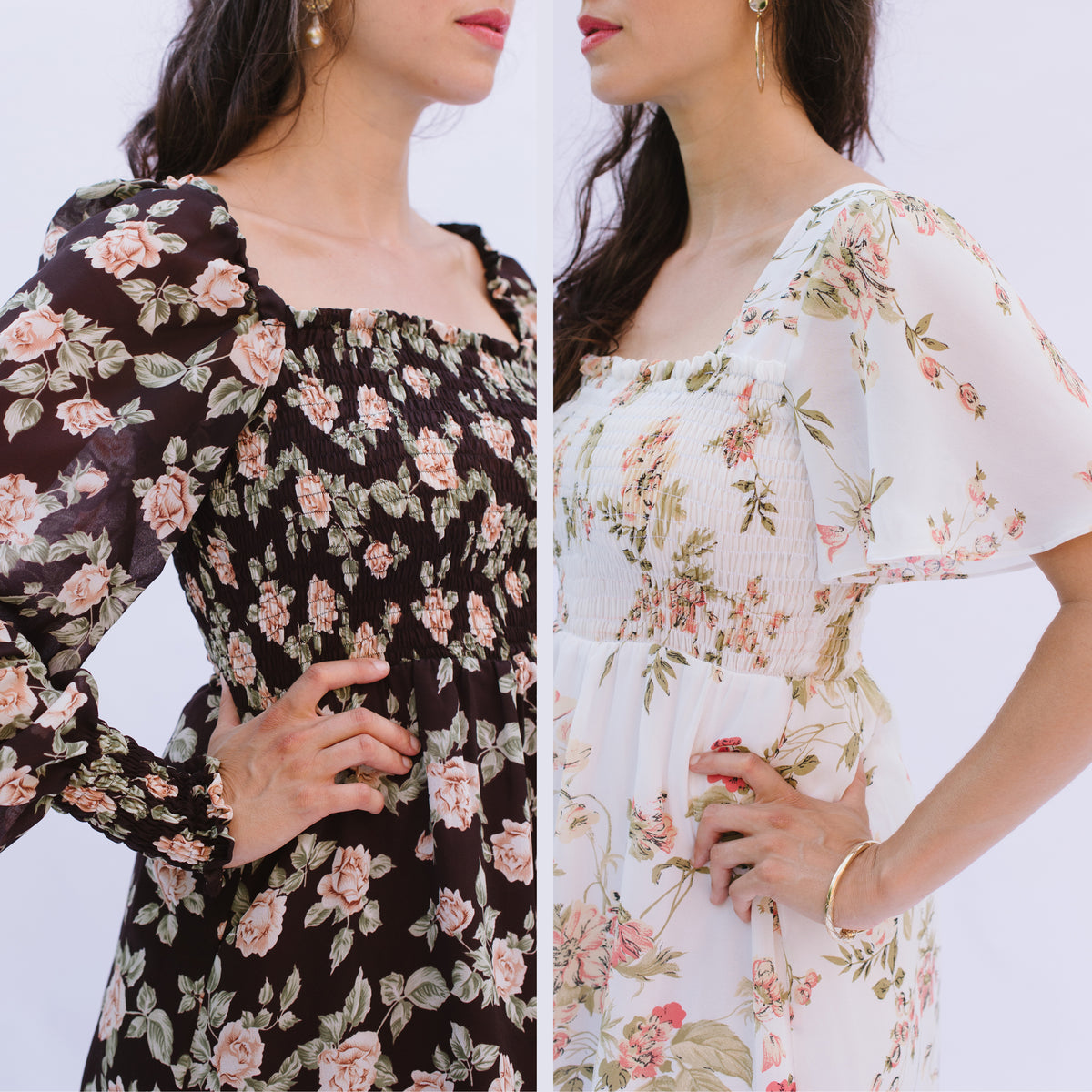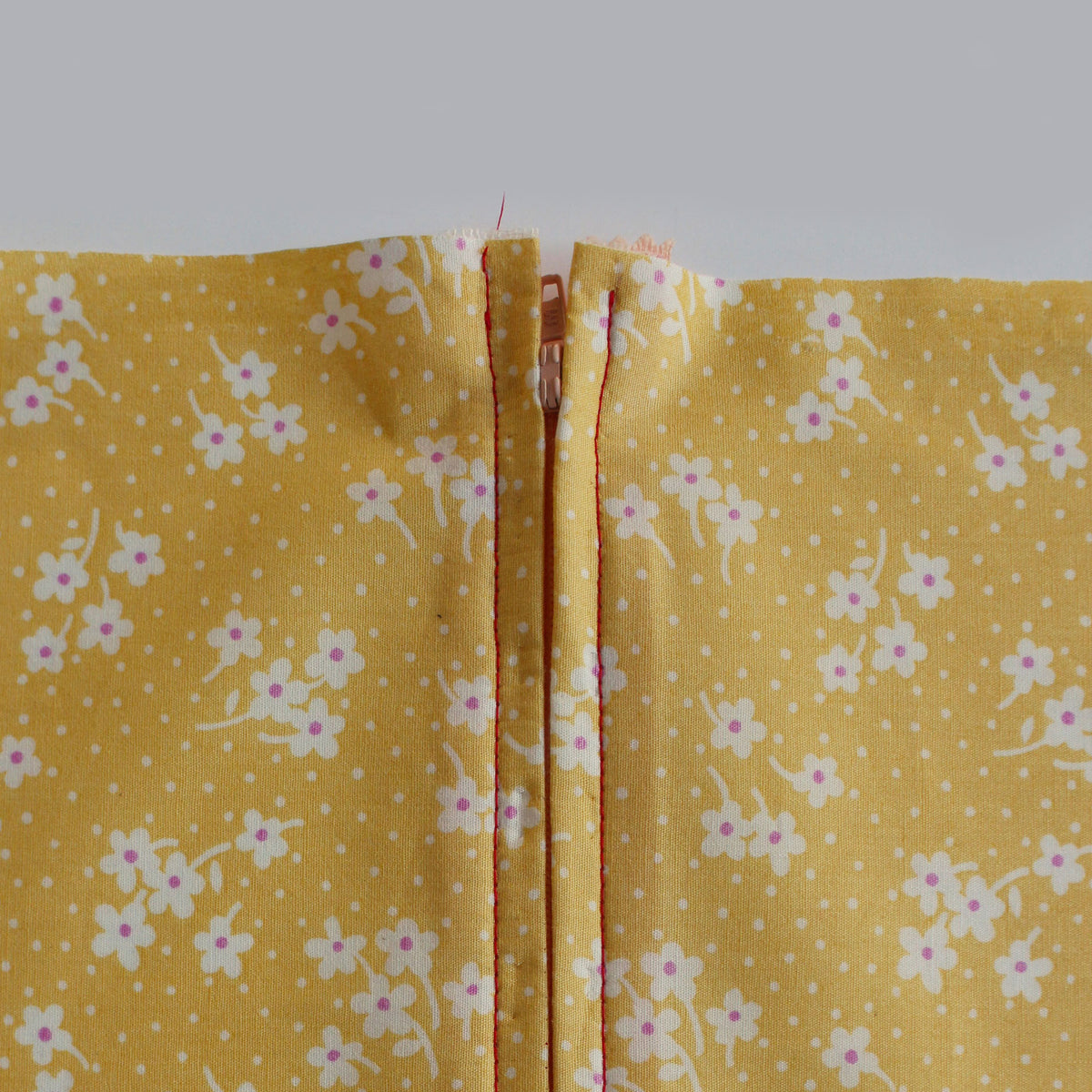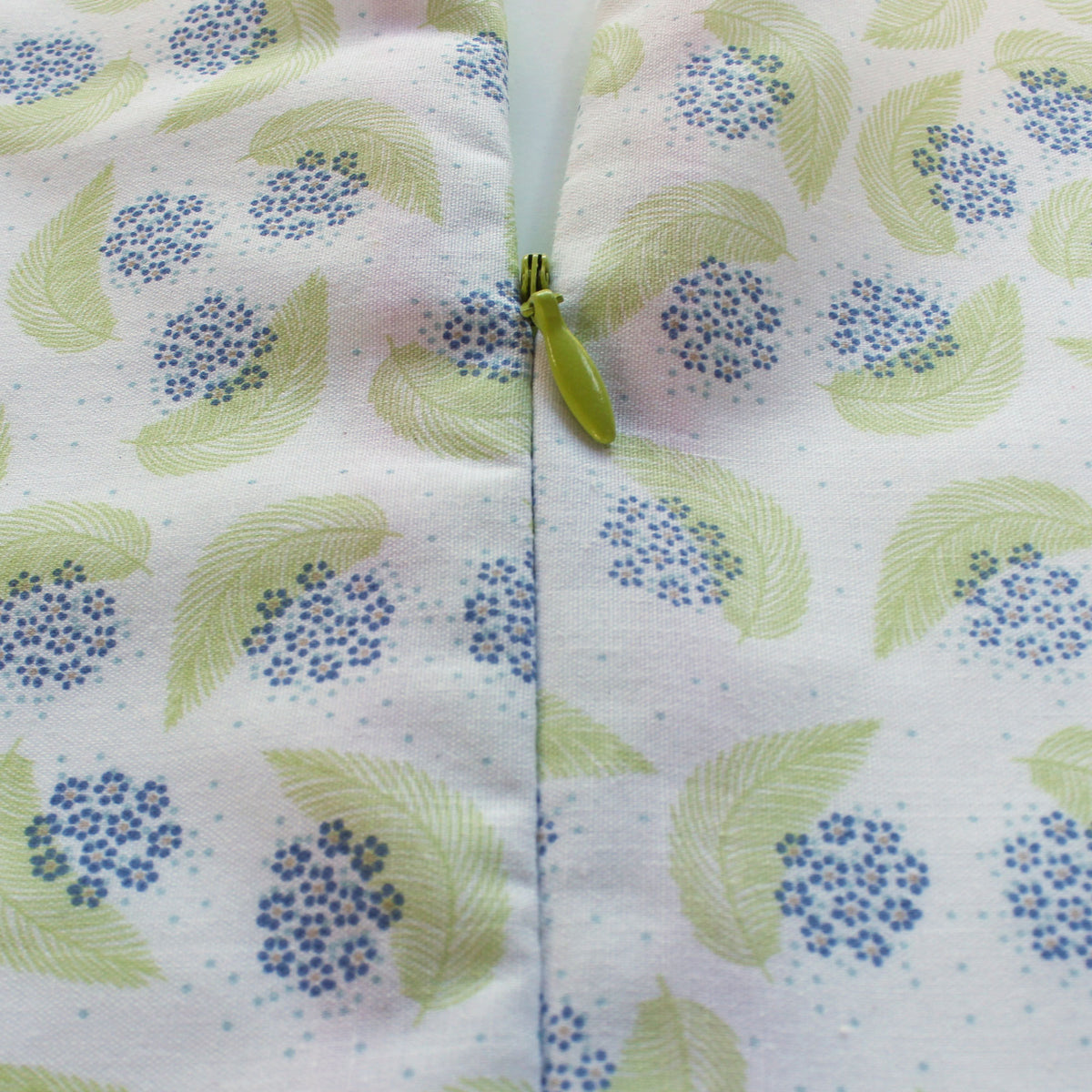How to make self covered piping
Adding piping to your seams can add such a special touch. It's worth the extra bit of work as it can make your seams more prominent and beautiful.
Piping comes in lots of different colors and is usually in a basic cotton fabric, but it looks extra fancy when you create piping covered with self-fabric. Whether your pattern calls for it or not, you can add piping to seams if you want to spruce up the design a little. Here's a tutorial to show you how to cover store-bought piping with self-fabric.

I used it here in the Simone dress because I wanted to add prominence to the seam lines of the front placket. I broke up the monotony of the blue fabric by adding a running stitch in anchor threads to match the piping to integrate the colors.
Materials:
- Store bought piping
- Self-fabric
- Ruler
- Scissors or rotary cutter
- thread
- Regular zipper foot
- Pins

Cut a bias strip of self-fabric, long enough for the length of your piping. Determine the width of the strip by the piping diameter and the garment's seam allowance. If the piping is 1/4 thick, and the seam allowance is 5/8", then calculate: 1/4" + 1/4" + 5/8" + 5/8 = 1 3/4"

If the piping is very long, you may need to cut multiple strips and piece them together. In that case, cut the ends of the strips should at a 45-degree angle. Lay the strips together and offset them by the seam allowance, which should be about 3/8". This way, once you've sewn them together, the edges will be flush.




Voila, you can now use it wherever you like!
But we're not done yet! You can also purchase decorative cording that has seam allowance

You'll often find the cording seam allowance won't match that of your garment.

To get around this, on the garment, draw a chalk representing the sew-line. This is where the cording will be sewn. Place the cord along the chalk line, and using a regular zipper foot, staystitch the cord in place

It will be correctly positioned for when you sew the adjoining garment pieces together
YOU MAY LIKE:
Leave a comment
Comments will be approved before showing up.
Also in The Victory Patterns Blog

Pair the Sofia Bell Sleeve Strap with any sleeve option

How to sew a centered zipper
A centered zipper is one of the most usefull zippers to be able to sew. They are commonly used in skirts, dresses, and pants, as well as cushion covers and handbags. In this tutorial, we'll show you how to sew a centered zipper using directional sewing, which avoids the fabric from shifting in different directions once the zipper is sewn in.



